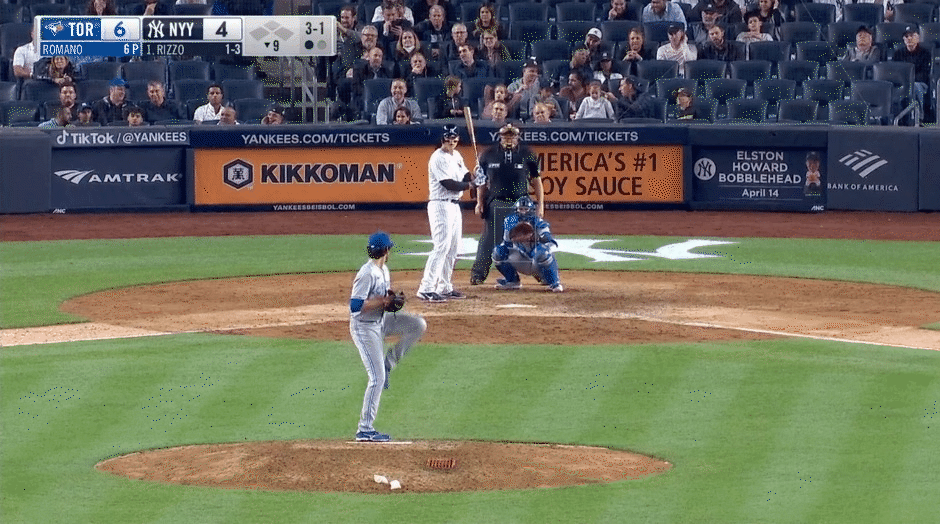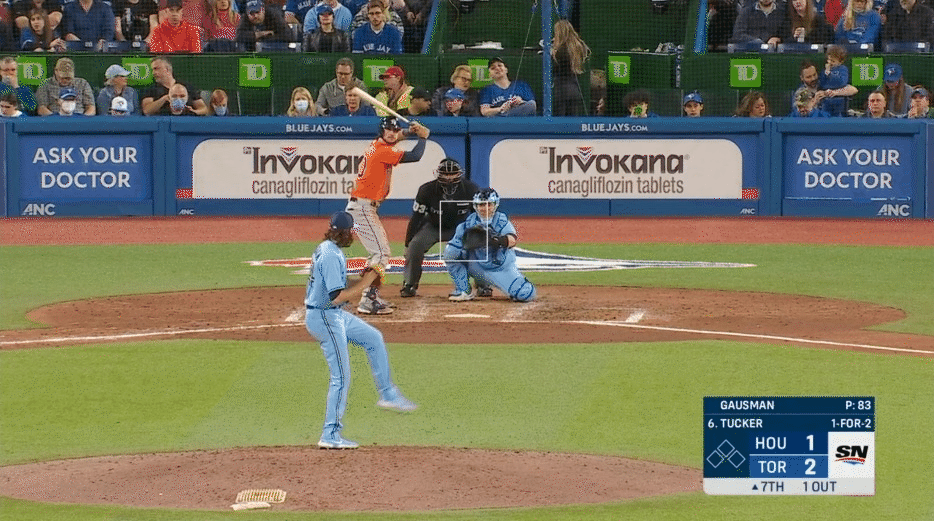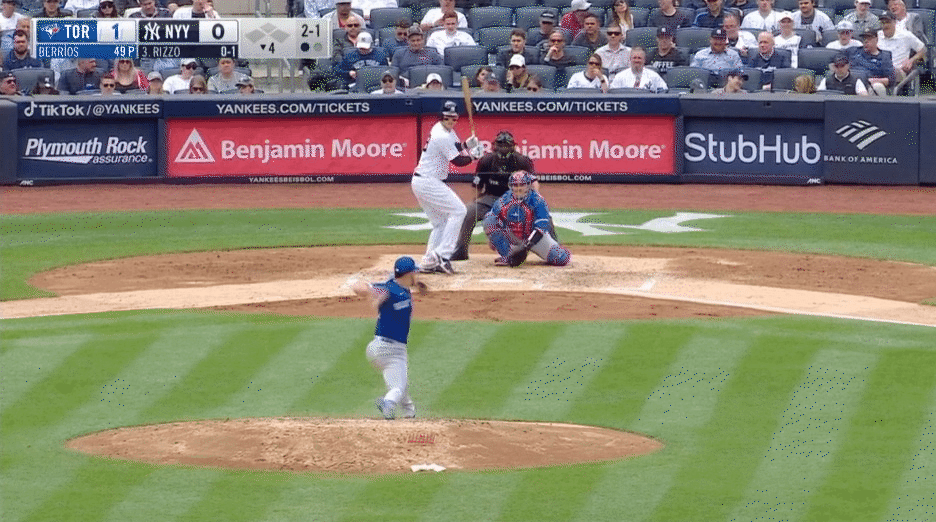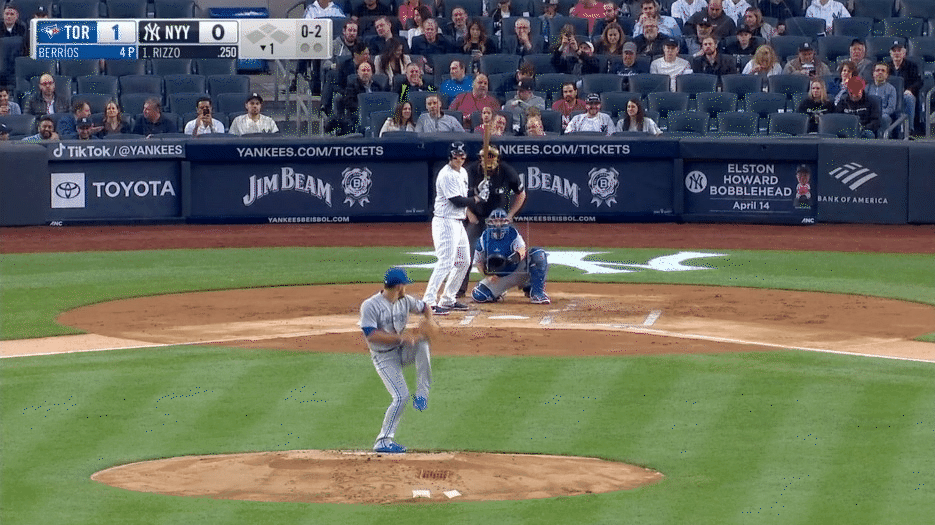
When it comes to innovative on-field strategy, the Toronto Blue Jays have rarely been seen as MLB leaders in recent seasons.
The Blue Jays aren’t tactical Luddites by any means, but they tend to deploy their pitching fairly traditionally, and the sacrifice bunt has reared its ugly head a few more times in the Charlie Montoyo era than many fans would like.
In 2022, though, the club is beginning to stand out, specifically when it comes to defence. From 2016 to 2021 the Blue Jays ranked around league average in shift rate, finishing between 12th and 24th each season.
This year they are firmly in first at 64.3 per cent, with the next-highest team (the New York Mets) coming in at 57.5 per cent.
Not only are the Blue Jays moving fielders around in a general sense, they are making a particular commitment to four-outfielder alignments. In Montoyo’s first year as manager they threw an extra man into the outfield on just 38 pitches, and that number has shot up recently.
|
Season
|
Total Pitches with 4OF |
Percentage of Batted Balls Events with 4OF |
|
2019 |
38 |
0.09% |
|
2020 |
15 |
0.07% |
|
2021 |
292 |
1.03% |
|
2022 |
390 |
7.65% |
While it’s far from the team’s most common defensive alignment, it’s become an important card up the Blue Jays’ sleeve — and they’re by far the league’s biggest proponents of the unorthodox defence. Only six teams haven’t tried it in 2022, and the other five have combined to throw fewer pitches with a four-man outfield (289) than the Blue Jays.
If Toronto is going to be an extreme outlier on the 3-4 defence, it’s worth asking how effective that’s been. The sample is small, but the overall numbers aren’t particularly encouraging. Of the 80 balls in play with a four-man outfielder, 29 have fallen in for hits — good for a .363 BABIP.
That sounds grim, but it’s not a fair way to judge the alignment because it doesn’t take into account what would’ve happened if the Blue Jays were playing a more conventional defence instead. Digging through footage of all of these hits, it’s clear that there are only three that straight-up positioning was significantly more likely to convert into outs.
Exhibit A
Exhibit B
Exhibit C
If we posit that this exotic positioning cost the Blue Jays three singles this season, the question becomes what it took away from opposing offences. In order to find that we sorted liners and flyballs with an xBA of at least .500 against the 3-4 that became outs.
Using that criteria, there are at least four potential extra-base hits the Blue Jays have saved with their extra outfielders. There’s some level of subjectivity in determining what three outfielders could and could not reach, but the xBA serves as a guide, and so does the film.
There are a few ways the 3-4 has eaten up hits for Toronto so far. One is balls hit hard into the meat of the gap, only to find an outfielder right there.
Exhibit A – 100.2 mph
Exhibit B 103.0 mph
Those are the type of balls you’d expect a four-man outfield to swallow up.
It’s also effective against some less obvious flies. For example, this 100.4 mph drive by Joey Gallo looks routine, but Santiago Espinal is only able to play that close to the right-field corner because he has a teammate in right-centre.
Against a traditional setup, there’s a good chance that’s past the right fielder for extra bases.
Lastly, having more manpower out there gives a team more protection against balls that are hit extremely hard, almost regardless of where they are. When opposing hitters barrel up the ball there is less time to react, and outfielders simply can’t cover much ground. When there’s less ground to cover, though, it’s possible to make plays on a laser — like this one from Kyle Tucker.
That ball had an .890 xBA, giving Springer almost no time to get to the spot. While it wasn’t that far from where he’d normally be playing in centre field, it travelled so fast that it’s hard to imagine him reaching it. There’s simply no room for error on a play like this, and having Springer ever so slightly further into the gap may have made all the difference.
Because of the small sample it’s far too early to call the Blue Jays’ four-man outfields a roaring success or dismal failure, but the early signs are at least intriguing. Any strategy that’s willing to concede the occasional single in exchange for robbing doubles has a good chance to be effective over the long term — even if there are occasional moments of frustration.














